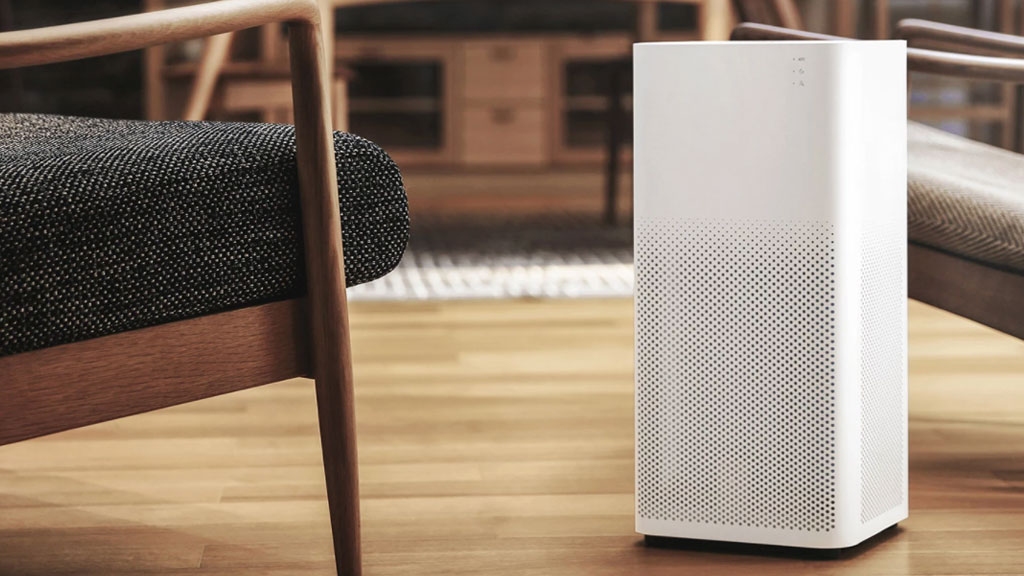Saving money on your air purifier might not be a good idea, Dyson tells us why
It's time to get over the CADR test

Out of the top ten most polluted cities in the world, seven are in India. If you count the top thirty, then there are 22 Indian cities. As per AirVisual's report, it's only India, China, Pakistan, and Bangladesh that contribute to the world's 50 most polluted cities where the first two are notable contributors.
Many North Indian cities see a rise in air pollution every season around Diwali, while that's a different fact that the increase is from 'unhealthy' (AQI 151-200) to 'severe plus' (AQI 700+) category. That means the people living in affected cities rarely get 'healthy' (AQI 0-50) air to breathe. So we must stop looking at pollution as a seasonal concern, and start taking immediate precautions.
Pollution levels in Delhi and NCR peaked to a three-year high, a thick blanket of smog covered the national capital on Monday. So much so that even the Supreme Court of India has said, "No one is safe, even inside homes; it is atrocious. This is not the way we can survive."
So what does this mean? There is no healthy air to breathe in many parts of the country. And while authorities are busy playing the blame game, it's you who can step ahead and ensure your well-being.

What is the solution?
There are thousands of articles explaining what should we do to curb pollution. On a larger scale, there is a lot of work to be done, and many regulations need to be revised across sectors by the state to fight pollution. While authorities are working towards a long-term solution, individuals are dependent more on short-term options like masks and nebulizers.
By the time the authorities are working towards achieving long-term results, we need to find effective solutions to fight the deadly air. Wear N95 masks and staying indoors is effective to an extent but providing your own supply of healthy air is something that only air purifiers claim to achieve.
Today, almost every urban home has a water purifier, a device that was once as irrelevant as air purifiers are for many. Awareness and realization of the adverse effects of unhealthy water made consumers believe that it's a necessity that will impact their health in the long run. Similarly, with air pollution getting more obvious and literally visible, more people now understand the idea of having an air purifier at their homes.
Get daily insight, inspiration and deals in your inbox
Sign up for breaking news, reviews, opinion, top tech deals, and more.
It makes even more sense when you realize that an individual breathes between 9,000-11,000 liters of air every day, out of which, most of it is indoors. That's when air purifiers help you with your share of healthy air quality.
There are tons of companies making air purifiers, and that's where the question arises as to which air purifier is the best? There are some cheaper alternates and some very expensive ones, but your concern should be if your investment is really paying off or not. Or even if they actually have benefits.

Do air purifiers actually help?
To understand this better, we reached out to one of the global leaders in the category, British tech giant, Dyson. Why Dyson? Because it's one of the few companies leading the charge for in-home air purification technology.
Since most of us already know what causes pollution and how it is harmful to us, we asked Dyson if these machines are actually made to fight the extreme conditions in a place like Delhi NCR. If yes, how?
Pointing at the onset of winters in India, when there's a spike in pollution levels and dust David Hill, Design Engineer, Dyson said, "the pollution levels have started seeing a rise since the beginning of October. That augers well for us, is that of late, there has been an increasing appreciation around the need for air-purifiers in India. However, in the absence of any regulatory requirements and benchmarks regarding air purifier certifications in India, the air-purifiers installed may not even fulfill its primary purpose of providing you clean air in all circumstances."
He explained how the industry is still using obsolete CADR test to rate air purification. It is a standard test that brands like Xiaomi, Philips, Blueair, etc. rely on. But Dyson believes its own real-world usage dependent POLAR test depicts a better scenario of a modern home. It doesn't just define the quantitative measure of the clean air rate but is made to ensure that the room is filled with clean air.
How is the POLAR test more reliable over CADR?
The CADR test is one valid way to look at purification. It is important to note that there are a few limitations in this industry test, which are addressed in the POLAR test.
The CADR test is performed in an 11.8m2 chamber, in comparison to the POLAR test chamber that measures 6 x 4.5 x 3m. That gives it a floor space of about 27m2, which more closely relates to the average-sized living room in this part of the world, especially for those who can afford Dyson.
Referring to another interesting fact, David said, "the test is not structured to tell you how good a machine is at mixing and projecting purified air evenly across a room. A person seated right beside the purifier could, for example, benefit more from the machine as opposed to someone at the far end of a room."
In the CADR test, the ceiling fan serves to mix the purified air in the room for the purifier. Most of us do not use fans in winters, and that means the machine could be purifying the air directly around it, which means you are breathing clean air only when you're near to the machine.
David also pointed out that, "unlike the visible pollutants being channeled into the CADR test chamber, many forms of air pollution are actually invisible."
We have to agree that the modern home design has changed to more sealed spaces. But sealed houses also home to static air and bad circulation of air, and a build-up of harmful pollutants. The CADR test fails to address this factor as there is only one air quality sensor in the chamber, meaning it only gives an aggregate reading of the air quality in the room.
The POLAR test method addresses these limitations of the conventional tests suiting the new demands of modern home environments.
The walls of the chamber are glass, housed within a stainless steel frame with full temperature and humidity control. This fully-sealed chamber is filled with a network of 9 air quality sensors (anemometers), and the ceiling fan is not operational during the tests. It gives a comprehensive understanding of how air quality changes in different parts of the chamber.
Instead of placing the purifier in the center of the room, the POLAR test requires it to be in the corner of the chamber, which is where I would want to keep my air purifier.
You can see a demo video of the POLAR test below.
Busting the myth about dust
As we mentioned, modern houses are home to pollutants. Everyday household objects like wooden furniture, candles, gas cookers, cleaning sprays, house plants and pets all release harmful pollutants into our homes.
Dust is a significant pollutant in cities like Gurgaon and Noida and that's a major concern for potential air purifier buyers in these cities. I encountered a few people concerned about the dust that settles in their rooms despite using an air purifier round the clock. Does that mean the purifier is ineffective? No.
Typically, it is the invisible dust that constitutes indoor air pollution. The dust that settles down in our homes is heavier, often of PM 100, and it does not contribute to the AQI level.

Understanding the importance of sensors and filters
The only way to know how well an air purifier is working is through its sensors. While many affordable CADR tested air purifiers have a single sensor, Dyson air purifiers have an algorithm that processes the input from three on-product sensors. Each sensor constantly monitors the air for particles, gases, temperature, and humidity. When pollutants are detected, the machine automatically reacts and adjusts the purifying settings to counteract the pollution and maintain the target air quality. It means a huge part of the process is relying on the quantity and quality of sensors, where the cheaper alternates might falter.
Then comes the most crucial element in any air purifier, the filters. The pollutant types that are blocked by the filters are dust, pollen, tobacco smoke, pet allergens, dust mite allergens, 2.5-micron particles, 0.1 microns particles, tobacco smoke, Formaldehyde, Benzene, Ammonia, Acetaldehyde, Acetic acid, Ozone, Nitrogen dioxide, Toluene, Trichloroethylene, and Naphthalene.
The effectiveness of filters is measured by how well it is able to capture particulates from the polluted air that passes through it. Checking the HEPA filter from inside will give you a fair idea of the efficiency.
While many air purifiers claim that their HEPA filters remove nearly 100% of particles passing through them, the actual efficiency sticks around 80% or less, considering the leakage.
To fix this, Dyson's 360 degrees sealed filter is engineered to draw in air from all around the circumference of the machine. The filtration system is made up of two separate filters – a particulate H-13 grade glass borosilicate HEPA filter and an activated carbon filter.
The filters are sealed within the machine; air can only pass through the filters, not around them, so more particles can be captured in the first pass. Dyson claims to capture 99.95% of particles as small as 0.1 microns.
The Dyson air purifiers contain two different types of filters – a pair of H-13 grade glass borosilicate HEPA filters and a pair of activated carbon filters. There is a very fine pre-filter layer that traps the larger particles before the air passes through the HEPA filter.
Dyson says, "the carbon filter has over three times more carbon than the previous generation of filters. It uses carbon granules rather than carbon cloth." More carbon in the filter means the filter will be able to capture more harmful gases, including Formaldehyde, Benzene, and NO2 from the air.
Should you save money on air purifiers?
The question is subjective as to where you live, how is the air quality and how big is your room. However, if you are living in the most polluted cities in India, we would recommend you to go with a better solution like Dyson. After reviewing a few Dyson air purifiers, we've realized that it's an investment that offers more value in the long term as it's a slightly expensive option currently in the Indian market.
If you have three tiny rooms and a tight budget, going for three affordable options like Philips AC1215 or Mi Air Purifier 2S is not a bad idea too.
Sudhanshu Singh have been working in tech journalism as a reporter, writer, editor, and reviewer for over 5 years. He has reviewed hundreds of products ranging across categories and have also written opinions, guides, feature articles, news, and analysis. Ditching the norm of armchair journalism in tech media, Sudhanshu dug deep into how emerging products and services affect actual users, and what marks they leave on our cultural landscape. His areas of expertise along with writing and editing include content strategy, daily operations, product and team management.
